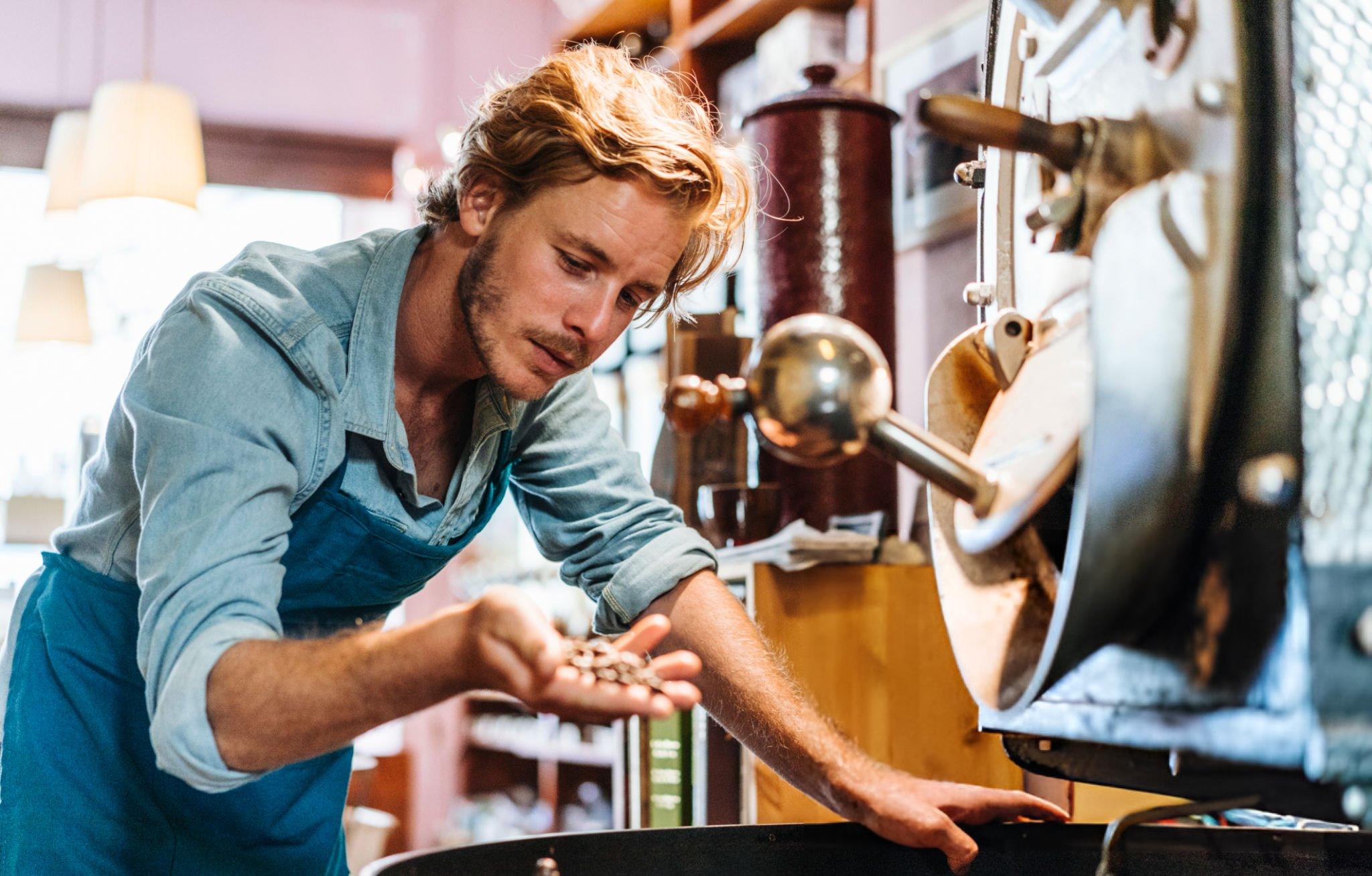Most people know that coffee can taste wildly different from one cup to the next, even when using beans from the same region. Much of that difference comes down to how the coffee is roasted. The roasting level plays a big role in shaping flavor, aroma, strength, and how it works with your favorite brew method. Whether you like your coffee mellow or bold, understanding roast levels can help you find a taste you keep coming back to.
Roasts generally fall into three categories: light, medium, and dark. Each one brings out different notes within the bean. For example, a light roast may showcase more of the bean’s original personality, while a dark roast turns up the body and richness with a smokier edge. Let’s break it down and explore what makes each roast distinct so you can better spot what fits your own coffee style.
Light Roast
If you’re new to coffee or just exploring different roasts, light roast is a good place to start. These beans are roasted for a shorter time, which keeps more of their natural flavors intact. You’ll usually find light-colored beans with no oils on the surface. That’s a sign they haven’t been roasted long enough for the oils to rise, and it’s exactly what gives them their bright and lively taste.
Here’s what you can expect from a typical light roast:
– More acidity and sharper flavors
– Notes that range from citrusy and floral to lightly sweet or tea-like
– A lighter body and cleaner finish
Light roasts come alive when brewed using methods that highlight those delicate flavors, like pour-over or manual drip. They also do well with AeroPress and cold brew if you’re looking for something refreshing in the summer. These brews tend to bring out the bean’s origin traits, so if those beans were grown in a region known for fruit-forward coffee, you’ll really taste that shine through.
One thing to note is that light roast doesn’t mean lower caffeine. In fact, it can sometimes carry more caffeine than darker roasts. That’s because longer roasting generally burns off some of those compounds. So if you’re looking for something that’s both flavorful and packs an energy punch, light roasts deliver.
Let’s say you’ve just picked up a bag from Ethiopia, known for those floral and fruity beans. Brew it using a cone-shaped pour-over and you’re likely to pull out notes of jasmine, lemon, or even berries. The overall profile will feel light, bright, and refreshing—perfect for those who enjoy a clean, crisp drink first thing in the morning or during a warm Lafayette afternoon.
Medium Roast
Medium roast often hits the sweet spot for folks who like balance—something not too bright and not too bitter. These beans are roasted longer than light but not to the point where they become rich and oily like dark roasts. The color deepens to a warm brown, and you might start to see a little oil peeking through, but not much.
Here’s what stands out in most medium roasts:
– A well-balanced flavor with a mix of acidity and richness
– Notes that often include chocolate, nuttiness, warm spices, or caramel
– Fuller body than light roasts, with a smoother finish
Medium roasts tend to work well with nearly every brewing method. Whether you’re using a drip coffee maker, French press, or a stovetop moka pot, medium roast brings a good balance of flavor and strength. It gives you enough depth without overwhelming the senses, which makes it a solid everyday drink for many people.
With these roasts, the origin flavors and roast character meet in the middle. So if you’re looking for something easygoing and versatile, medium roast is a safe and satisfying choice. It’s also a great go-to for households with people who enjoy different types of coffee, since it pleases a wide range of palates.
Dark Roast
Dark roast coffee is where you’ll find bold flavors and heavy body. These beans are roasted the longest, often until they crack again, which gives them an oily surface and deep brown, almost black color. At this level, much of the bean’s original origin flavor fades behind the strong roast character.
Here’s what to expect from most dark roasts:
– Lower acidity and smoother, fuller body
– Notes of dark chocolate, toasted nuts, spices, or smoky undertones
– Some bitterness balanced by a rich, lingering finish
Dark roasts are great for those who prefer their coffee strong and less sweet. They shine in brewing methods that bring out those deep flavors, such as French press, espresso, or stovetop moka pots. The boldness pairs well with milk too, so if you like lattes or cappuccinos, a dark roast will hold up well without getting lost in the mix.
The extended roast also reduces the fruitier or floral elements found in lighter roasts. Instead, you get more developed flavors that often remind people of roasted cocoa or even a bit of char, especially in darker espresso pulls. While it may sound intense, coffee lovers who enjoy the richness of a strong cup often find dark roast comforting and consistent.
For example, brewing a dark roast from Sumatra in a French press can bring out earthy notes and hints of spice. It’s the kind of profile that pairs nicely with cool mornings or sweet pastries. Lafayette locals might find it a warm counterbalance to rainy weather when something with a bit more heft just feels right.
Choosing The Right Roast For You
With so many roast levels out there, choosing the right one comes down to what you personally enjoy. Everyone has a different idea of what coffee should taste like. Some like something crisp and zesty, while others reach for richness and depth. The key is figuring out what makes each roast distinct and how that lines up with your preferences.
Here are a few things to think about when picking a roast:
1. Flavor preference: If you enjoy bright, fruity, or floral flavors, try a light roast. Prefer nutty, balanced notes? Medium roast might hit the mark. Crave deep, bold coffee? Dark roast is worth trying.
2. Brewing style: Certain roasts go best with certain brew methods. For example, pour-over works great with light roasts, while French press suits dark roast better.
3. Body and acidity: If you like heavier coffee with less bite, go for medium or dark. If you’re okay with more tartness and a clean finish, light roast fits well.
4. Freshness: No matter which roast you choose, fresh roasted coffee beans always make a difference. They bring out clearer flavors and ensure your brew doesn’t taste flat or dull.
When in doubt, explore. Buy small bags of different roast levels and compare the flavors side by side. Make notes of what you like and don’t like. That’s the best way to discover what really fits your tastes without guessing.
A Taste Worth Exploring
Coffee isn’t one-size-fits-all, and that’s what makes it fun. Roasting is a part of the process that can completely change your experience with a cup, and getting to know what each roast brings to the table helps you make smarter choices, whether you’re brewing at home or picking up a fresh bag locally in Lafayette.
The best way to understand what you like is to taste with curiosity. Switch up your brew method. Try a roast you’ve never paid attention to before. The more you explore, the more you’ll sharpen your own coffee sense, finding that sweet spot between flavor, texture, and aroma. There’s a feeling that comes with brewing a cup that hits just right, and that starts with knowing which beans were meant for you.
Whether you’re starting your coffee adventure or deepening it, there’s always more to discover about the flavors and stories behind every roast. Ready to explore fresh roasted coffee beans that capture the essence of each roast level and the spirit of Lafayette? Jet Coffee has a collection waiting to match your taste.



